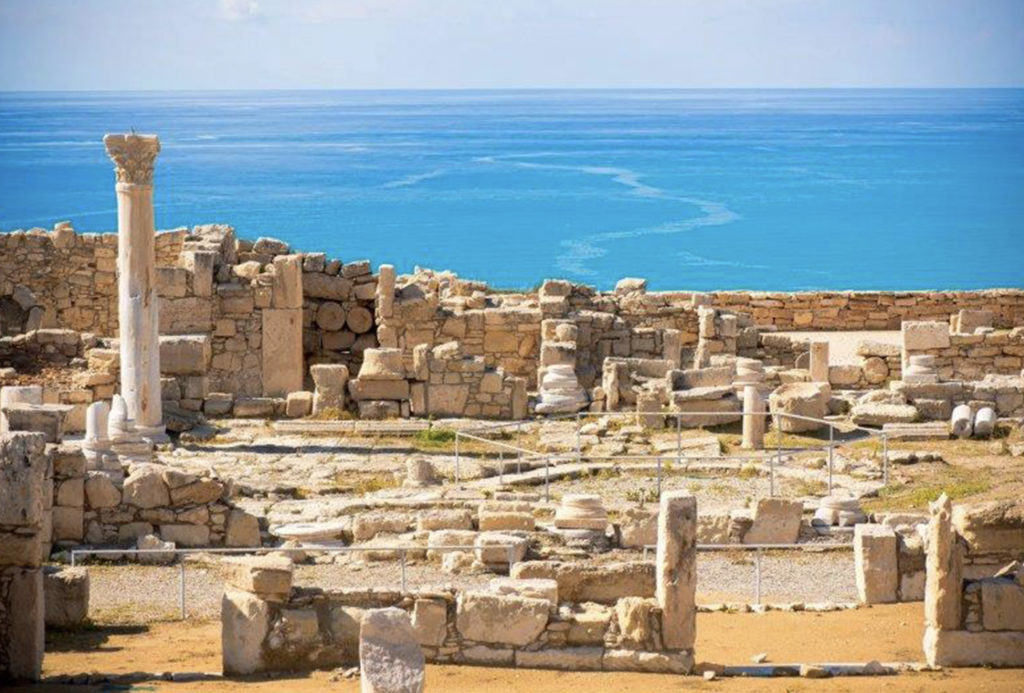The Island of Cyprus
Situated at the north-eastern end of the Mediterranean basin, Cyprus is the third largest island in the region.
Area: 9.251 km2 Population: 847.000
Time Zone: GMT+2
Currency: Euro
Capital: Nicosia
Political System: Presidential Democratic Republic
Languages: The official languages of the island are Greek and Turkish, whilst English is widely spoken
EU Member: State 2004 Eurozone 2008
Cyprus is a small island with a long history and a rich culture that spans 11.000 years, making it one of the oldest civilisations in the Mediterranean – as evidenced by the many fascinating cultural sights, museums, monuments and galleries. Situated at the crossroads of three continents – Europe, Asia and Africa – the island’s unique geographic position has played an important part in its turbulent past since antiquity. Its Prehistoric Age inhabitants were joined 3,500 years ago by the Mycenaean Greeks, who introduced and established their civilisation, thus permanently instilling the island’s Greek roots. Many other cultures followed thereafter, including Phoenicians, Assyrians, Egyptians, Romans, Franks, Venetians, Ottomans and British, who all left behind visible remnants of their passage, and have thus created a mosaic of different cultures and periods.
Blessed with the beauty of nature’s best palette, the scenery of Cyprus unfolds across glittering coasts, rolling mountains, fragrant forests and rugged headlands. From the warm shores of the mainland to the unspoiled and cool oasis of the Troodos mountain range, nature lovers, artists, photographers and explorers will all delight in meeting shy creatures, and discovering rare plants that peep out amidst waterfalls, coves, woodland, winding trails and secluded sandy beaches. As the island is on the migration path between Europe, Asia and Africa, Cyprus is a birdwatchers dream, with flocks of flamingos frequenting the salt lakes, and many other significant species passing through or nesting. And deep in the forests, the national animal – the Mouflon – roams freely, with catching a glimpse of this timid, wild sheep a real treat for locals and visitors alike. Exotic and rare forms of wildlife also give Cyprus a special touch. Green and Loggerhead turtles breed on the island’s sandy beaches in summer, while the Mediterranean Seal and dolphins have also been seen swimming in the warm, calm, crystal clear seas of the island.
Find out more about Cyprus: https://www.visitcyprus.com/index.php/en/
Limassol – The Forum City
Legends of kings and kingdoms, and the origins of the island’s wine making industry characterises the Limassol region, which embodies both the ancient and the modern.
Known as the region of wine, celebrations and ancient realms, Lemesos is comprised of its main city – which sits between two important archaeological sites; the ancient city-kingdom of Amathus to the east, and the ancient city-kingdom of Kourion to the west – along with rural areas and charming mountainous villages, where old traditions and crafts are still practiced.
Lemesos is the second largest city of Cyprus, the home of the island’s main port, and a bustling holiday resort. From its jewel of a marina and impressive archaeological monuments, to the vast 15 km coastal strip lined with restaurants, bars, cafes, shops and entertainment establishments, the main city is thriving and colourful.
The region also encompasses two unique wetlands. Germasogeia Dam is a peaceful place to relax, take a stroll, or enjoy a spot of angling, whilst Akrotiri Salt Lake is perfect for observing nature and wildlife (especially birds). The environmental significance of the Salt Lake and its surrounding area are showcased at the new installations of Akrotiri Environmental Centre.
The region then trails up the sun-kissed southern slopes of the Troodos mountains, with vineyards forming a pleasant green backdrop to the city. The hillside villages here are known collectively as the ‘Krassochoria’ (or wine villages), and keep their old traditions of viticulture alive, producing the island’s best wines even today, and especially one of the oldest named wines in the world – the sweet dessert wine of Commandaria. Here, visitors will find a tranquil, rural retreat where hiking and cycling can be enjoyed in the unspoiled countryside.
With its viticultural pedigree and a magical history, the region of Lemesos simply sparkles with opportunity from coast to hillside.





